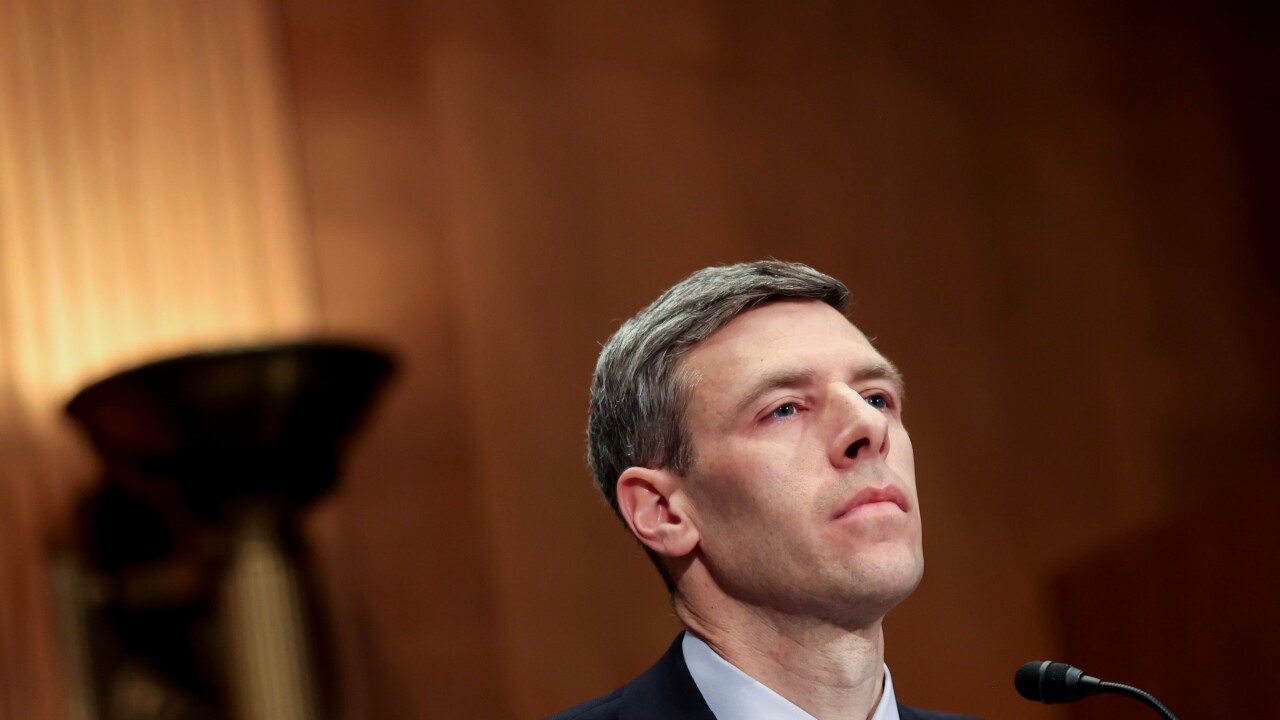LAS VEGAS — The conversion of State Bank of India's massive branch network to a new core processing system should give even the largest American players a taste of the obstacles — and rewards — of moving to a new core.
State Bank of India's five-year core migration was a more complex project than most core conversions, in part because the bank and its affiliates' 18,000 branches each operated on their own computer system and were not connected to one another technologically. Before the conversion began in 2003, many of the bank's employees had never used a computer mouse.
Despite the project's complexity, State Bank of India can serve as an example for the U.S. banks that are moving to a new core, said Bob Hunt, a senior research director for retail banking at TowerGroup.
"I believe the North American market is ready for core modernization, and I think there is a lot to be learned" from State Bank of India and other foreign banks that have taken the plunge, Hunt said Tuesday during a panel discussion at the Bank Administration Institute's Retail Delivery conference here.
The Mumbai bank, majority owned by the Indian government, continued to grow even as it focused resources on the conversion, a common concern in the U.S. banking market.
During its conversion, State Bank's deposits grew by 103% and loans grew by 229%, Hunt said.
However, it did not have a seamless makeover.
State Bank encountered significant training hurdles with its 200,000 employees during the upgrade. Because its branch network includes locations in remote areas of India, State Bank had to create its own virtual private network to ensure constant connectivity.
"We are not constrained by the availability or nonavailability of public transmission lines," A. Krishna Kumar, the bank's deputy managing director of information technology, said during the presentation.
When the Indian economy started expanding rapidly and a few private-sector competitors began moving to core systems, State Bank management realized it, too, had to get its operations more in sync to retain customers, Kumar said.
"They realized they needed to compete," Kumar said.
The conversion lasted until the middle of 2008. Now State Bank's domestic network runs on Tata Consultancy Services Ltd.'s BaNCS core system. State Bank's international branches run on Infosys Technologies Ltd.'s Finacle core system.
The project seems to dispel the idea that core conversions are an impossible feat for very large banks, which run the risk of losing customers and millions of dollars if a technology deployment goes wrong.
In a February report on State Bank's domestic conversion, the research firm Celent pointed out that, combined, Bank of America Corp., JPMorgan Chase & Co. (including Washington Mutual) and Wells Fargo & Co. (including Wachovia Corp.) had only slightly more branches than State Bank and its affiliates.
"The massive scale of this is noteworthy," Bart Narter, a senior vice president with Celent, said in an interview Tuesday.
However, State Bank's situation, including the fact it was running on an antiquated system before the conversion, is not entirely applicable to U.S. banks, which face distinct core processing challenges.
State Bank was "going from a very rudimentary system to a state-of-the-art system," Narter said. "They didn't really have a lot to unravel."
That is not the case for most large U.S. banks, many of which have bolted together separate software programs from different vendors to handle various operations.
Such a setup can make it difficult for banks to pull information from their different operating units to get a complete view of their customers' overall product relationship with them as well as overall risk — but it can also be difficult for them to replace, analysts said.
Fiserv Inc., Fidelity National Information Services Inc. and other U.S. core vendors have said banks are showing more interest in systems that can more easily integrate with product-specific programs, making it less cumbersome for bank employees to access information across their product lines.
Union Bank in San Francisco, a subsidiary of the UnionBanCal Corp. unit of Bank of Tokyo-Mitsubishi UFJ Ltd., is upgrading to Infosys' Finacle core system.
FIS said earlier this year that it was moving Citigroup Inc.'s North American operations to one of its core systems.
Citi has not commented on its conversion project, which FIS disclosed in an earnings call in February, but Narter identified the system it is moving to as Systematics.
Citi's conversion is believed to be a prerequisite of its plans to modernize its U.S. branches as it has for some of its branches in Japan.
BBVA Compass, a subsidiary of Banco Bilbao Vizcaya Argentaria SA, also is said to be upgrading its core.
"I'm not saying we're at the tipping point," Narter said, but if those banks "start gaining share because they have either lower costs or more flexible systems," others may follow suit.
The risk of major setbacks that are possible with a large-scale core conversion still makes some big banks reluctant to embark on these types of projects, said Robert Landy, the vice president of banking group services at Mercator Advisory Group in Maynard, Mass.
While outdated core systems are making it hard for some banks to grow, organizational politics are an even bigger impediment for banks, Landy said.
"I think most of the challenges in terms of being more customer-centric are not technology challenges," he said. "It's an organizational challenge."





